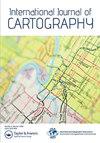从Carto-City到Surface-City:对城市缺失情感的消解与重新映射
IF 0.9
Q4 COMPUTER SCIENCE, INFORMATION SYSTEMS
引用次数: 0
摘要
摘要借鉴丹尼斯·科斯格罗夫的术语“Carto-City”的魅力,其中包含了“城市空间和地图空间是不可分割的”的概念[科斯格罗夫,D.(2006)]。Carto-City。J. Abrams, & P. Hall(编),Else/where:绘制网络和领土的新地图(第148-157页)。明尼苏达大学[University of Minnesota],本文将这一观点应用于“城市”作为都市化的概念化——作为一种相互联系的精神状态或城市情感。通过将Carto-City“unmapping”和“re-mapping”作为地表城市的视觉方法,这一艺术研究实践旨在帮助我们理解和绘制当代城市意识的相关制图。科斯格罗夫的“看、想象和表现”(2008)被重新诠释,以描绘出一种特定的情感,这种情感来自于一场全球性流行病的有限短暂——缺失的情感。当世界各地的实体城市空间停滞不前时,数字连接的扩展创造了一个集中的空间,用于批判性地反思如何映射相互关联的城市情感层。我对这个问题的回应,地表城市,是基于我正在进行的研究,通过学术写作和视觉实践来研究城市意识及其映射。RESUMEEn年代一个魅力'inspirant du terme carto-cite de丹尼斯•,业务娴熟,土耳其宫廷的那个,“不在班等空间cartographique不可”是科斯格罗夫(2006),cet(中央东部东京)essai贴花这个想法一个一个范本,de la城镇在瞿如此更'urbanite——就像联合国状况d精神connecte urbaine或者一个情绪。grace grace grace grace grace grace grace grace grace grace grace grace grace grace grace grace grace grace grace grace grace grace grace grace grace grace grace grace grace grace grace grace grace grace grace grace grace grace grace grace grace grace grace grace grace grace grace grace grace grace grace grace grace grace grace grace grace grace grace grace grace grace grace grace grace" voir, imaginer et representer " de Cosgrove (2008), " cima - interpracimetacemote ", " cima - interpracetacemote ", " cima - interpracemote ", " cima - interpracemote ", " cima - mondiale ", " cima - mondiale ", " cima - mondiale "。世界上所有的物理空间都是自由的arrêtés,所有的空间都是自由的,所有的空间都是自由的,所有的空间都是自由的,所有的空间都是自由的,所有的空间都是自由的。3 .马萨拉西拉西拉西拉西拉西拉西拉西拉西拉西拉西拉西拉西拉西拉西拉西拉西拉西拉西拉西拉西拉西拉西拉西拉西拉西拉西拉西拉西拉西拉西拉西。关键词:carto - city - surface - city -mapping -mapping - urbaness披露声明作者未发现潜在的利益冲突。麦琪·麦考密克麦琪·麦考密克,皇家墨尔本理工大学艺术学院兼职教授,德国罗伊特林根大学荣誉教授。她拥有墨尔本大学建筑学院的博士学位。她作为艺术家、策展人、作家和学者在艺术领域有着悠久的历史。在这些领域中,她对艺术实践如何有助于更深入地理解在日益城市化和数字化的世界中不断变化的意识本质的映射特别感兴趣。她最近的出版物是《劳特利奇公共领域艺术指南》(2021年)。她目前是《公共空间杂志》(城市空间建筑、意大利和联合国人居署)公共空间艺术与行动主义特刊的主编。她联合策划了澳大利亚/德国的研究项目SkypeLab(2012-2020),该项目汇集了来自澳大利亚、欧洲、中国和南美的艺术家,探索艺术实践与数字空间的关系。她目前的艺术实践使用摄影和绘画来创造城市意识层次的制图。本文章由计算机程序翻译,如有差异,请以英文原文为准。
Carto-City to Surface-City: un-mapping and re-mapping the urban emotion of missing
ABSTRACTDrawing on a fascination with Denis Cosgrove’s term ‘Carto-City’ that encompasses the concept that ‘Urban space and cartographic space are inseparable’ [Cosgrove, D. (2006). Carto-City. In J. Abrams, & P. Hall (Eds.), Else/where: Mapping New cartographies of networks and territories (pp. 148–157). University of Minnesota], this essay applies the idea to a conceptualisation of ‘city’ as urbaness – as a connected state of mind or urban emotion. Through a visual methodology of ‘unmapping’ and ‘re-mapping’ of Carto-City as Surface-City, this artistic research practice aims to contribute to how we understand and map the connected cartographies of contemporary urban consciousness. Cosgroves “seeing, imagining and representing” (2008) is re-interpreted to map a specific emotion within urbaness emerging out of the restricted transience of a world-wide pandemic – the emotion of missing. As physical city spaces across the world stood still, digital connection expanded creating a focused space for critical reflection on how interconnected layers of urban emotion might be mapped. My response to this, Surface-City, is grounded in my ongoing body of research into urban consciousness and its mapping through academic writing and visual practice.RÉSUMÉEn s'inspirant d'une fascination du terme ‘carto-cité' de Denis Cosgrove, terme qui porte l'idée que ‘l'espace urbain et l'espace cartographique sont inséparables' (Cosgrove 2006), cet essai applique cette idée à une conceptualisation de la ville en tant qu'urbanité – comme un état d'esprit connecté ou une émotion urbaine. Grâce à une méthodologie visuelle consistant à ‘dé-cartographier' et à ‘recartographier' la carto-cité comme une cité-surface, cette pratique de recherche artistique vise à contribuer à la manière dont nous comprenons et nous cartographions les cartographies connectées de la conscience urbaine contemporaine. L'expression ‘voir, imaginer et représenter' de Cosgrove (2008) est ré-interprétée pour cartographier une émotion particulière propre à l'urbanité, qui a émergé lors de la période éphémère d'une pandémie mondiale – l'émotion de manquer. Alors que les espaces urbains physiques du monde entier se sont arrêtés, la connexion numérique s'est développée, créant un espace particulier de réflexion critique sur la manière dont les couches interconnectées des émotions urbaines peuvent être cartographiées. Ma réponse à cela, la cité-surface, s'inscrit dans le cadre de mes recherches en cours sur la conscience urbaine et sa cartographie à travers l’écriture académique et la pratique visuelle.KEYWORDS: Carto-CitySurface-Cityun-mappingre-mappingurbaness Disclosure statementNo potential conflict of interest was reported by the author(s).Additional informationNotes on contributorsMaggie McCormickMaggie McCormick is Adjunct Professor in the School of Art, RMIT University and Hon. Professor at Reutlingen University, Germany. She holds a PhD from the Faculty of Architecture at The University of Melbourne. She has a long history in the arts as an artist, curator, writer and academic. Across these fields she has a particular interest in how art practice contributes to a deeper understanding of the mapping of the changing nature of consciousness in an increasingly urbanised and digitalised world. Her most recent publication was in The Routledge Companion to Art in the Public Realm (2021). She currently co-edits the Art and Activism in Public Space issues of The Journal of Public Space (City Space Architecture, Italy and UN Habitat). She co-curated the Australian/German research project, SkypeLab (2012–2020), that drew together artists from Australia, Europe, China and South America, to explore the relationship of art practice to digital space. Her current art practice uses photography and drawing to create a cartography of layers of urban consciousness.
求助全文
通过发布文献求助,成功后即可免费获取论文全文。
去求助
来源期刊

International Journal of Cartography
Social Sciences-Geography, Planning and Development
CiteScore
1.40
自引率
0.00%
发文量
13
 求助内容:
求助内容: 应助结果提醒方式:
应助结果提醒方式:


